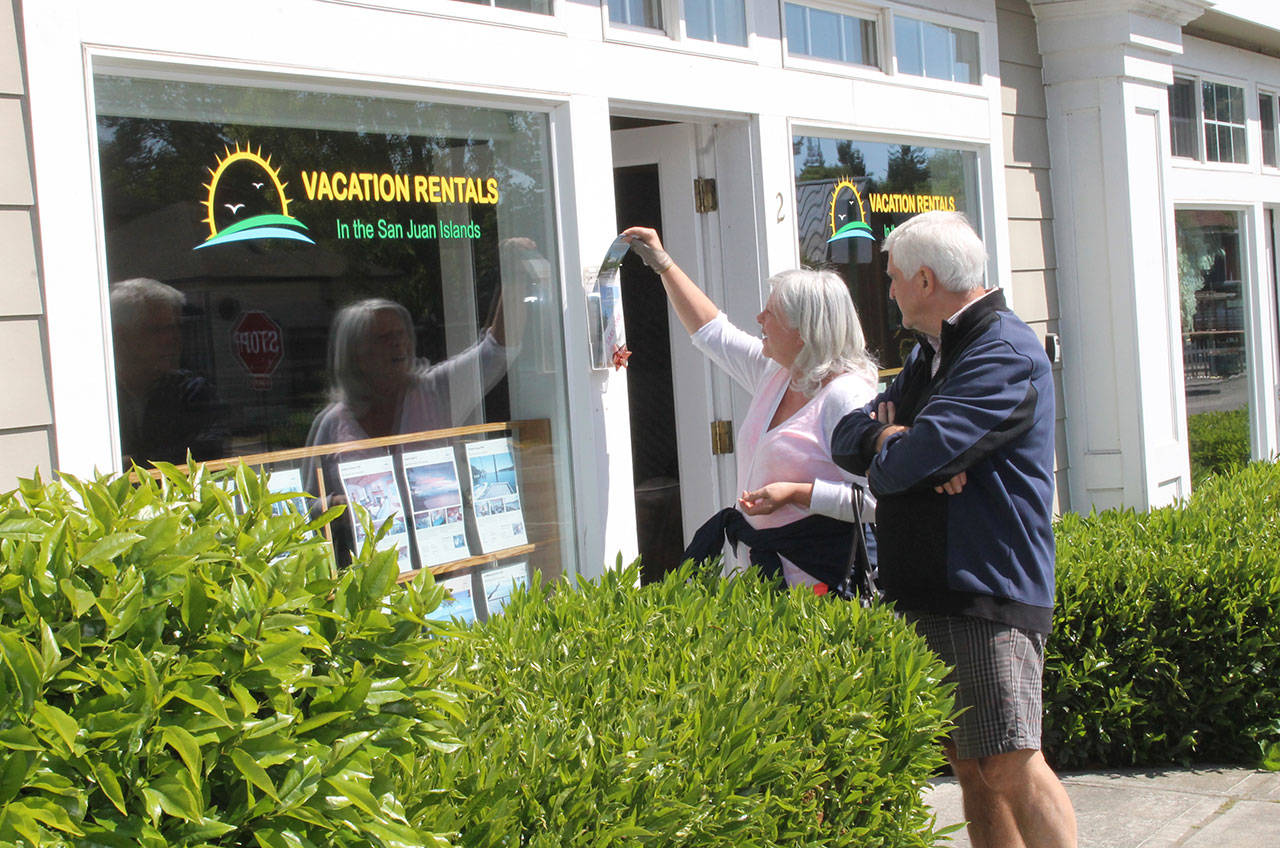When Barbara Defalco’s 100-year-old farmhouse needed repairs three years ago, she rented out the cottage near her home on Airbnb to defray the costs. After 33 years on the island, it was Defalco’s first vacation rental.
“I feel very blessed to live in a place people want to visit,” she said.
Islanders like Defalco rely on temporary rentals for necessities or even livelihoods, but proposals to county code could make purchasing permits more difficult.
Proposed changes are driven by complaints from islanders who expressed concern that vacation rentals are increasing. And it’s true. According to a San Juan County Community Development report, temporary rentals reached a decade-long high of 62 percent of all single-family residence permits issued last year.
Proponents of code changes suspect vacation rentals deplete the stock of long-term rentals for local islanders while driving up prices to rent or own. Rental property owner John Dunning disagrees.
In an email to the Journal, Dunning of San Juan Vacation Ventures, wrote the average assessed value of his company’s represented homes is over $780,000. That’s “not exactly affordable housing,” he wrote.
Seasonal residents’ second and third homes, which aren’t lived in for most of the year, could be one culprit for depleting the county’s long-term housing stock. Of the 43 percent of vacant homes in San Juan County, only 7 percent are vacation rentals, according to a March community development report.
Vacation rental nuisances are addressed in proposed amendments, including limiting noise and hiding garbage. To Dunning, who operates 72 rentals on the islands, annoyances are caused by visitors at vacation rentals without permits. Eliminating illegal rentals would make “almost all of the negative perception toward vacation rentals … disappear,” he wrote.
Illegal vacation rentals are difficult to find to enforce codes, said Erika Shook, director of San Juan County Community Development at the April 21 planning commission hearing. Sometimes online ads don’t include addresses, nor do the permits, she explained.
More regulations could increase illegal operations as well, advised Johannes Krieger, owner of San Juan Property Management. In an email to community development officials, he estimates that the proposed amendment to lower guests per bedroom from three to two would cause a 20 percent reduction in rental income. Vacation rental owners would have to charge higher rates to earn a profit, encouraging operating without a permit.
“I think some regulation is a good idea, so there’s consistency and safety, just as long as there’s not too much,” said Defalco. “Really, vacation rentals are a boon for everyone.”
Defalco is right. According to the Dean Runyan Associates 2016 Travel Impacts Report, visitors spent over $211 million in the county and generated $21.2 million in local and state taxes.
Last year, the county collected more than $1.4 million in lodging tax. That’s the 10.1 percent tax applied to dwellings where people stay less than 30 days. It’s 2 percent higher than the county sales tax, on already costly permits, ranging from $1,000 to $2,300, depending on the property’s zoning.
The lodging tax is easily felt by temporary rental owners.
“[The government] made over $3,000 off me [in taxes] last year and I’m just a little tiny guy, there are bigger companies with more units,” said Mary Ellen Judge, who owns one vacation rental on her San Juan Island property.
Adding more fees, like for the proposed annual fire safety inspections for $40, is just a way for the county to make more money, she added.
“More regulations would just deprive me of income and visitors of a reasonably priced vacation rental,” said Judge, whose cabin can only be rented in the summer due to the lack of heat. This, she added, is a vacation rental that could not be used as a long-term rental.
According to the May 19 community development report, the county earned $98,000 on vacation rental permits in 2016.
The system creates a cycle — vacation rental owners incur a higher tax, but that lodging fee helps draw visitors to the island, by paying for promotions from agencies like the San Juan County Visitor’s Bureau. The lodging tax also creates facilities, like public restrooms, for them to use.
That tax could even create temporary housing for seasonal employees. In 2016, $100,000 went to start the county’s first affordable housing fund for workers of tourist-related businesses, according to San Juan County Councilman Rick Hughes.
“Businesses have identified housing as the No. 1 problem generating economic development,” he said.
The money could buy land or build a shelter for temporary workers, which is needed, according to a survey conducted by the Journal. Journal staff contacted 20 San Juan Island businesses and 16 said they were short on temporary workers during the island’s last peak season due to the lack of affordable housing.
It’s the tourism industry, wrote Dunning in his email to the Journal, that county officials should promote, not diminish.
“These changes will negatively impact the county tourism industry going forward, and we all know that tourism is a driving force in our island economy,” wrote Dunning.
Camps for and against regulation can share public comment with the community development department until the county council votes on the ordinance in the next few months. To stay up to date on the proposed amendments and read public comments, visit www.sanjuanco.com/1300/Vacation-Rental-Code-Amendment.
Read next week’s Journal for more coverage on the topic.



